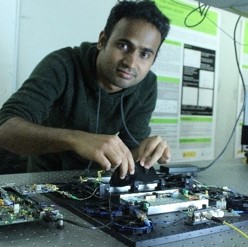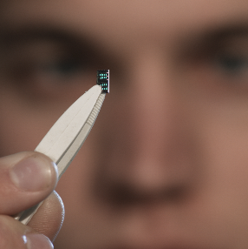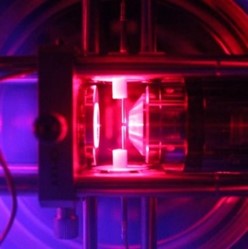ICFO decide game
Group 4 – Participant 6
Story cards
Read all the cards from this category, choose the one that looks more interesting to you and explain it to the rest of the group.
laura lorenzo
Story Card 3
I have always thought that artificial light could only bring us benefits as it allows us to live and work regardless of the hours of sunlight in a day. However, yesterday my neighbor, who is a big fan of technology and science, explained to me that artificial light can disrupt the life cycles of living beings.
There are many things left to understand about light pollution: that’s why she invited me to participate with her in a citizen science experiment to help researchers study the consequences of the exposition to artificial light. Who would have thought that walking and taking pictures with my cell phone could contribute to science!
health
blanca bueno
Story Card 13
I've loved cinema since I was a child, but I decided that would be my life when I saw my first 3D movie. The possibility of seeing the depth of the scenes on the screen seemed like magic to me. But, as is often the case in cinema, it’s just a special effect! The glasses with polarizing lenses that are given at the entrance, select different photons that come from the projectors, bringing to our eyes two slightly different images that our brain combines creating the feeling of three-dimensionality.
photonics everywhere
ernesto espinosa
Story Card 14
When I was studying at the Academy of Fine Arts, I would have never thought of pointing a laser at a picture by Leonardo da Vinci like I am doing right now! Don’t worry, I don’t want to damage it: the laser allows me to clean it and to bring it back to its original splendor.
Lasers and photonic analysis techniques are very useful tools for restorers of works of art like me: they allow us to analyze different aspects of works of art (such as pigments, or the process followed by the artist) without jeopardizing the integrity of the pieces. My work mixes art and science: I’m sure Leonardo himself would love it!
photonics everywhere
info cards
Read all cards from this category, choose the two that look more interesting and explain them to the rest of the group.
quantum cryptography
Info Card 3
We share on a daily basis a lot of private information (personal, financial or health data) that could be intercepted: the cryptographic protocols that currently protect them would not work with more powerful computers in the future.
A solution could come from quantum physics: it allows you to design cryptographic protocols that would withstand the attacks of any computer (present or future). There are still many technological challenges to the integration of quantum cryptographic systems into the telecommunications network: solving them is the goal of CiViQ, a European Quantum Flagship project that ICFO coordinates and in which others research centers, universities and large and small companies participate, including Quside, an ICFO spin-off founded in 2017.
Photo: One of the ICFO laboratories where technologies for quantum cryptography are being developed
information and cybersecurity
quantum technologies
Info Card 10
Quantum physics describes the world at the atomic and molecular scale: in recent years, the scientific community has learned to take advantage of phenomena that appear at the microscopic scale to create new technologies.
Quantum technologies are expected to improve the way some physical systems are studied, the security of our communications, the computational speed of computers, and the sensitivity of sensors.
With more than half of its groups working in these fields, ICFO joins its efforts with other research centers and companies that are actively involved in local (QuantumCAT) and international (European Quantum Flagship) networks that aim to accelerate the arrival of these technologies within the reach of society.
information and cybersecurity
optical tweezers
Info Card 19
A well-focused photon beam can trap objects and move them in a delicate and precise way: this is not science fiction, but an extremely useful and versatile photonic technique that earned its inventor the Nobel Prize.
You can find optical tweezers in various ICFO laboratories in different areas of application: for example, they are used to trap atoms in order to better understand their properties, to measure the mobility and elasticity of some cells or to study small objects on the border between quantum and classical physics.
(Foto: Optical tweezers in one of the ICFO laboratories)
photonics everywhere
some of the coldest corners of the world
Info Card 20
ICFO has some of the coldest corners in the world, but no one can get in. There the temperature is lower than in deep space: only small fractions of a degree (hundreds of nanokelvins) above absolute zero.
Only a few laboratories in the world can reproduce these conditions in small vacuum chambers, where they can trap small quantities of atoms (from a few million to a single one, depending on the experiment): in order to be able to study the interesting quantum properties that appear at such low temperatures, it is fundamental that the atoms are as cold (and therefore as still) as possible.
(Foto: One of the ICFO laboratories where they cool atoms close to absolute zero.)
photonics everywhere
thinking cards
Read all the cards from this category, choose the one that looks more interesting to you and explain it to the rest of the group.
can we trust science?
Thinking Card 3
Technology and science have been a part of our lives and such influence grows overtime. Is this positive? There is a part of the population that does not trust scientific results and rejects technological advances: what do you think of their position?
sciences or humanities?
Thinking Card 13
The boundaries between natural sciences and humanities have never been well defined. For example, think of Leonardo da Vinci: was he an artist or an engineer?
Today, many artists talk about science or technology in their works. On the other hand, scientists offer new tools and possibilities to creative people (the Arduino board was invented to help designers integrate electronics into their projects).
Does the distinction between sciences and humanities still make sense?
DECISIon
The time and resources available to solve important problems affecting society are limited. Imagine being part of the commission that has to decide how to invest the money for photonics research at European level for the coming years: knowing that photonics benefits society in many different ways, how would you distribute funds among the different research fields in photonics?
This is not an individual decision: each group must come to a unanimous conclusion by discussing correctly and rationally based on the facts that you have learned so far. There is no right or wrong answer. Like many things in life, it depends on the point of view you assume, the priorities you set, ...
light for health
Option 1
The pandemic that arose in 2020 taught us that public health is an important sector that affects many more aspects of society. A tiny virus can affect the lives of millions of people in all its aspects, not only health, but also the economy, industrial structure, labor market ...
That’s why it’s important to focus most of our efforts on research projects that can improve and care for people’s health.
light for information and cybersecurity
Option 2
We live in the information age. More and more companies and institutions are collecting and analyzing large amounts of data to improve industrial processes and services for the population. In addition, digital technologies are essential to communicate with each other, whether for work or fun. If information systems fail, strategic structures such as energy networks, traffic control, hospitals, governments, etc. fail, too. Thus, ensuring data security for quick and massive data transfer is of fundamental importance for a digitized society like ours.
That is why it is important to focus most of our efforts on research projects that can improve data collection, analysis, transmission and security.
light for energy and the environment
Option 3
We are in the middle of a climate emergency: to be able to solve it we need new environmental policies and the commitment of society as a whole. Science and technology can accelerate the change of paradigm that we need to save the planet with discoveries and innovative technologies. If we do nothing now, the Earth will be uninhabitable and unsustainable, but there’s still time.
That’s why it’s important to focus most of our efforts on research projects that can help us take care of our planet.
photonics everywhere
Option 4
Photonics is everywhere and has a positive impact in many different aspects of our lives. Sometimes, the same technology (such as the laser) can improve health, information and care for the environment at the same time. There are many global issues and it is difficult to set a priority, especially because they are interconnected.
That’s why it’s important not to focus our efforts on a single field of application: it’s better to diversify our efforts to have more chances of success.













